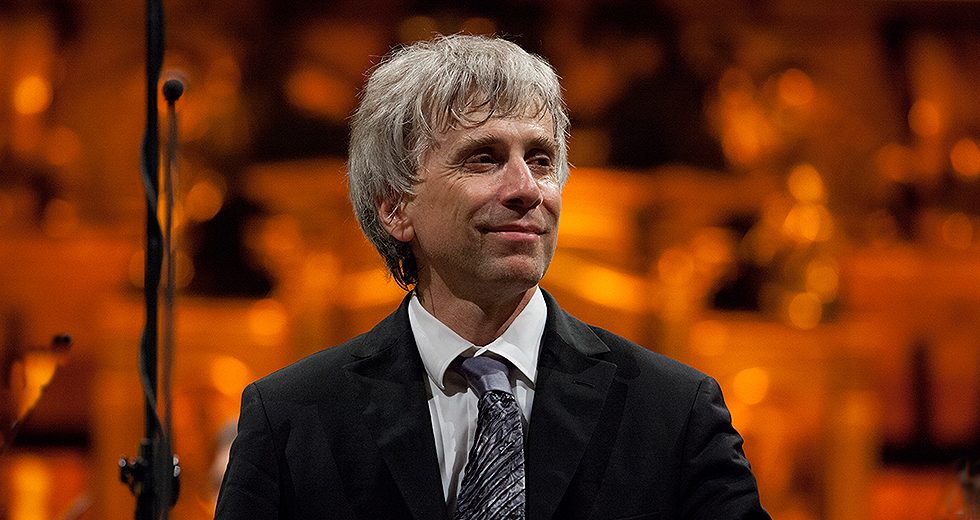
Most instrumental soloists who double as conductors tend to be pianists (Daniel Barenboim and Jeffrey Kahane) or violinists (Andrew Manze and Pinchas Zukerman). But Giovanni Antonini, leader of Il Giardino Armonico, plays recorder and the transverse flute, instruments that were popular during the Baroque era and have made a strong comeback with the rise of period-instrument ensembles beginning in the 1960s.
When he makes his debut June 7-9 leading the Chicago Symphony Orchestra, Antonini also will serve as soloist in Antonio Vivaldi’s Flautino Concerto in C Major, RV 443, one of three Baroque-era concertos on the program.
“My personal musical experience through my life is completely, absolutely related to the recorder,” Antonini said. (A flautino is a kind of recorder.) “It’s true that normally pianists, violinists and musicians who play, let’s say, more important instruments [become conductors]. Through the recorder, I think I’ve done all that I done. My work with articulation and even the limits of the instrument were so important when I started to develop my career as a conductor.”
One of Antonini’s big inspirations was Frans Brüggen, a Dutch flutist and recorder player who co-founded the famed Orchestra of the 18th Century in 1981 and served as its de facto chief conductor until his death in 2014.
Antonini did not set out to become the conductor of Il Giardino Armonico, but that’s how it worked out. The now internationally recognized Italian period-instrument ensemble began in 1985 as a trio composed of harpsichord, cello and recorder. After the first year, a lute player joined the group, and soon several more players were added for performances of Vivaldi’s Chamber Concertos. Then in 1989, the group became a full-fledged chamber orchestra, with Antonini taking over as conductor.
It’s hard to define exactly how the group is different from other prominent period-instrument ensembles, but Antonini thinks it starts with articulation, an aspect of its playing that group worked on intensively in the 1980s and ’90s. The group also strived to bring a kind of theatrical approach to its concerts. “For Italian people, there is a theatrical aspect to common life, and we transport this in quite a natural way into our way of making music,” Antonini said. As a result, he believes that listeners can recognize the distinctive sound of Il Giardino Armonico even after just a few seconds.
Antonini devotes about half his time to the period-instrument ensemble, and the rest of his schedule is taken up with guest conducting assignments. He serves as principal guest conductor of the Basel Chamber Orchestra in Switzerland and Orchestra Mozarteum Salzburg in Austria and regularly appears with the Berlin Philharmonic and Leipzig Gewandhaus Orchestra in Germany.
Like other conductors from the period-instrument realm, Antonini will try to bring a historically informed approach to the CSO concerts. Such encounters between musicians of different backgrounds is always interesting, he said, and the result will be something that is not purely historical or modern but a third kind of hybrid. “This is the exciting aspect of this kind of meeting,” he said.
His program will consist of a mix of Baroque and Classical-era works. The latter bookend the concert, starting with Luigi Boccherini’s Symphony in D Minor (La casa del diavalo/The House of the Devil), G. 506. Perhaps the most popular of the composer’s 30 or so works in this form, it borrows material from “The Dance of the Furies” in Christoph Willibald Gluck’s opera Orfeo ed Euridice.
The evening culminates with one of Haydn’s most famous works, Symphony No. 103 (Drumroll). The 11th of the composer’s 12 London symphonies, this work famously opens with a long roll of the timpani. “I think it’s one of the best of Haydn’s symphonies,” Antonini said. “Also, when Haydn performed this symphony, he had a lot of players, so these kinds of pieces are particularly good for an ensemble like the Chicago Symphony – the modern symphony orchestra.”
The middle of the program is devoted to the three concertos, including two featuring Avi Avital on mandolin: Vivaldi’s Mandolin Concerto in C Major, RV 425, and a transcription of J.S. Bach’s Keyboard Concerto No. 1 in D Minor, BWV 1052.